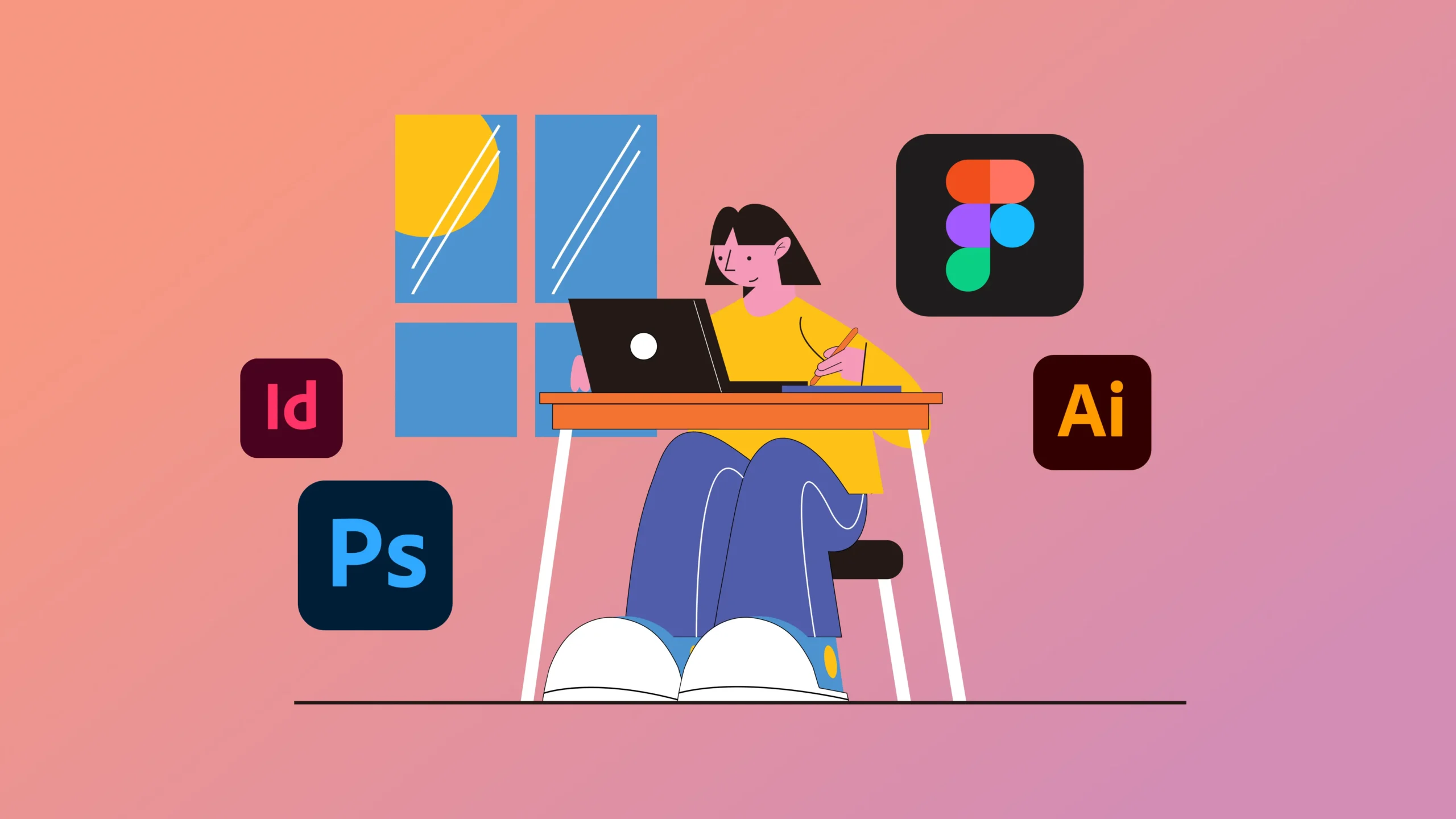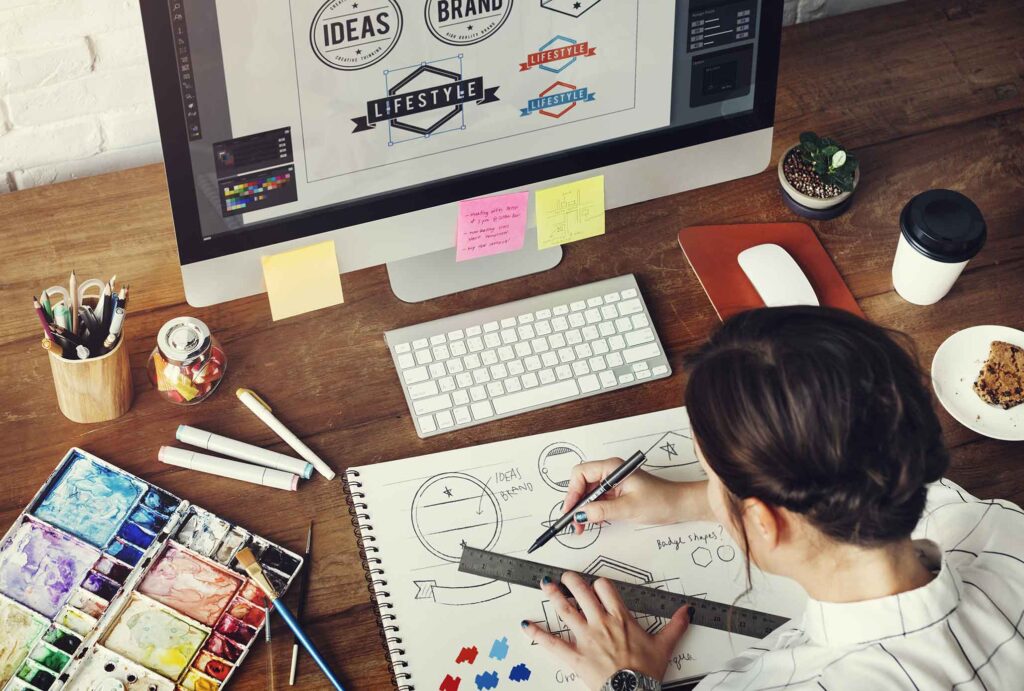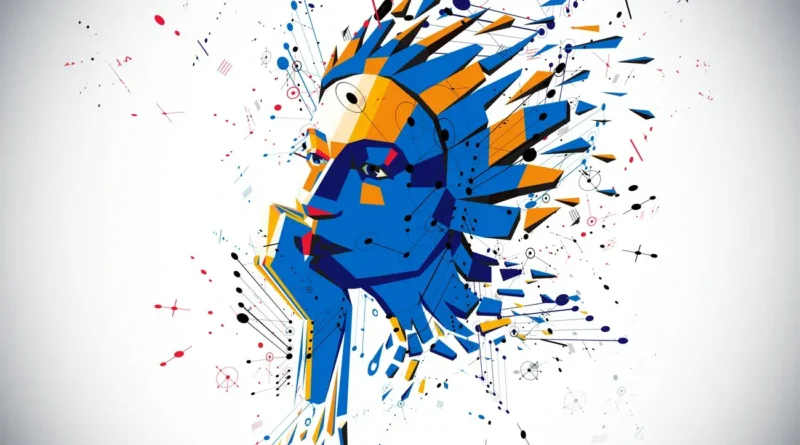What Is Graphic Designing?

Graphic design is a way of building an emotional connection to an audience. Learn more about the craft and the career paths you can explore.

Graphic design is a visual way of communicating with an audience. Working in graphic design, therefore, means blending together artistic creativity with technical skills to craft compelling visuals for a company or brand. The field offers diverse specialisations and the chance to see your work come to life in print, on screens, and even in physical spaces. Learn more about the practice of graphic design and see if it’s the right career for you.
What is graphic design?
Graphic design uses design elements to create visual assets that help companies connect and communicate with audiences. These assets can be small, like a company logo or app icon, or big, like a website or print ad.
A graphic designer aims to influence consumer emotion using different artistic elements and forms, such as print and digital art.
What are common design elements?
Because of the emotional connection that graphic design aims to establish with an audience, those who work in the field have a foundational understanding of key design elements. Four of the major design elements include:
- Hierarchy: A very busy design will make it hard for an audience to focus their attention on the important elements. Understanding hierarchy will help you create a design that calls attention to the most important pieces. For example, you might use a larger font to highlight the key message.
- Balance: On the topic of graphic design, you’ll often hear the word “weight.” Key elements in a design will have different weights in order to convey different levels of importance and make a design more engaging. Balance can bring harmony to a design by creating appealing symmetry or interesting asymmetry.
- Negative space: A design will naturally include blank elements because if you fill every piece of a given landscape, it will likely overwhelm your audience. Negative space is important and refers to the parts of the design you leave empty to emphasise the design itself.
- Colour: Colours convey different emotions. Drawing on colour theory to highlight or downplay certain messaging can enhance the design you ultimately create.
- Texture: Textures are becoming more commonly used, replacing single-color backgrounds. Textures can include paper, stone, concrete, brick, and fabric. They may be subtle or obvious and be used sparingly or liberally. Textures can be helpful to create a three-dimensional appearance.
- Typography: When working with text, Graphic Designers need to consider the relationship between how text looks and what it says. Typography is the art of arranging text in legible and engaging ways. Different moods or emotions can be expressed through different type choices. Good typography should create a strong visual hierarchy, provide balance and set the right tone.
What do designers typically work on?
As a graphic designer, you might specialise in one type of design or a variety of projects. Some projects you might work on include:
- Advertising
- Marketing
- Branding
- Logos
- Packaging
What Is the Difference Between UX Design and Graphic Design?
Graphic design focuses on the appearance of a product, while UX design focuses on the user’s overall experience with the product. These two types of design have many elements in common, but there are a few important differences between the two.
The goal of graphic design is to create visually appealing products that convey certain messages or information. Graphic Designers focus on branding, typography, layout, and the overall principles of design composition. They work on a range of materials, including advertisements, flyers, logos, packaging, and animations.
Graphic design is one component of UX design. However, UX design looks at the overall product. The goal is to enhance user satisfaction through improving the usability, accessibility, and pleasure of interacting with the product. UX design involves researching, prototyping, and testing.
Graphic Designers and UX Designers work closely together, and there is overlap in some of their tasks, as well as the skills involved. Some Designers alternate between graphic design and UX design throughout their career. The transferable skills gained from graphic design can also be very helpful for transitioning to UX design.
Benefits of Graphic Design:
Consistent, identifiable branding:- Having a Graphic Designer create or select the right logos, images, graphics, or layout for your creative materials will create visual consistency for your company across all of the different channels it uses to interact with clients. Think of any successful company and how much graphic design plays into its branding and any forward-facing design choices.
Visual communication:- Beyond establishing your brand, graphic design is a key tool in telling your target audience what you want it to hear. A photograph or text alone can’t convey all that good graphics can, so it’s the job of a Graphic Designer to find out ways to create emotionally resonant creative materials.
Boost sales and competitive position:- Good graphic design will make a company more visible in the marketplace, which will translate to a boost in revenue. Given the link between smart graphic design and concerns like usability and user experience, there’s plenty of evidence to show that just graphic design alone has a major effect on customer behavior.
